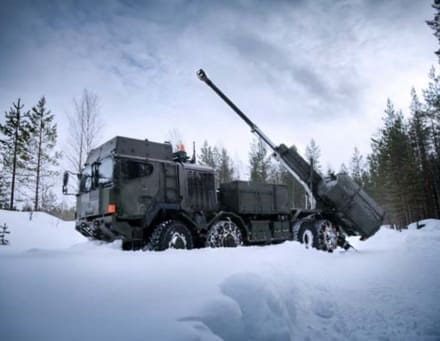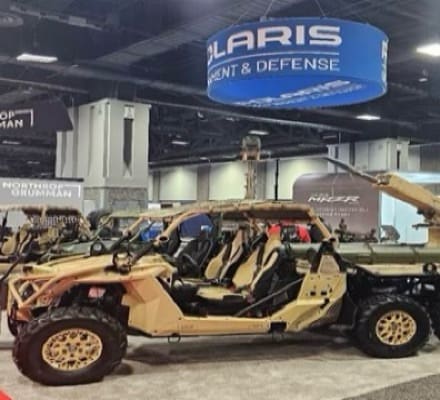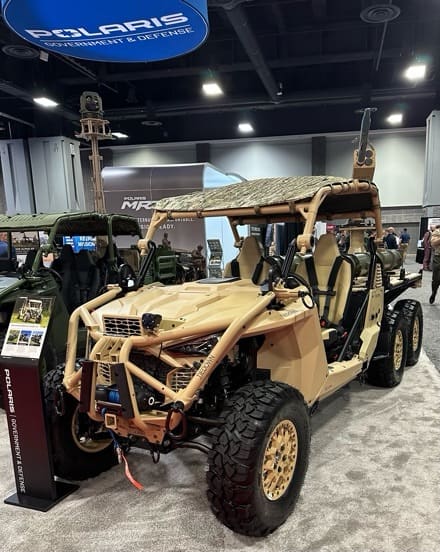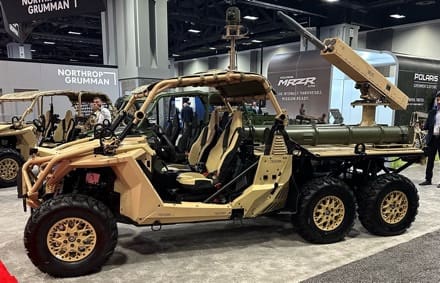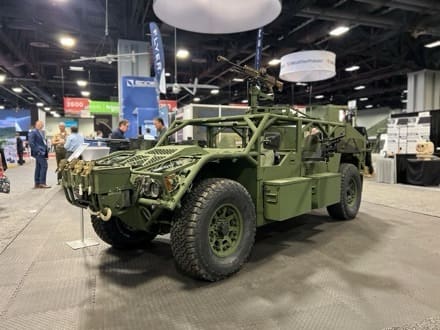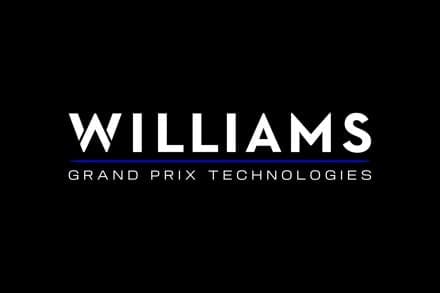Rheinmetall is set to impress attendees at Canada’s foremost defence industry event by showcasing, for the very first time, all three Mission Master vehicle variants. The Mission Master SP, XT, as well as the very latest addition to the family, the CXT, will all be on display, allowing visitors to discover the unique capabilities of each vehicle.
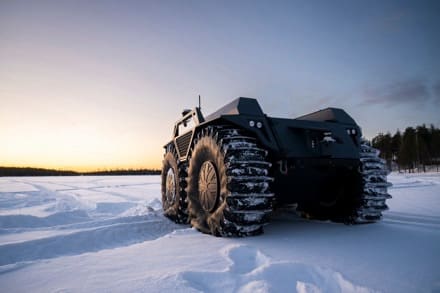
In addition to its Uncrewed Ground Systems (UGSs), Rheinmetall will display its Hardware-in-the-Loop Simulator, so that delegates can test the vehicles first-hand in a virtual, yet realistic environment.
Rheinmetall will also present the MSU-GP 200T Air Start Unit (ASU), the Solar?Shield fabric, and the Polaris MRZR-D4 equipped with the PATH autonomy kit. Additional vehicle solutions designed in collaboration with partnering companies will also be on display at the outdoor booth.
Rheinmetall Mission Master family:
• The Mission Master SP is a compact UGS with a low-signature electric motor and amphibious capabilities, and therefore an invaluable asset when silence is a must.
• The larger Rheinmetall Mission Master CXT and XT vehicles can tackle ice and snow, as well as sandy, rocky, and mountainous topography. Their advanced amphibious capabilities allow them to float and swim while maintaining their full payload capacity of 1000 kg.
The CXT is slightly smaller than the XT and has hybrid propulsion, meaning it can silently transport heavy payloads.
The XT is the largest Mission Master vehicle and is diesel powered.
Rheinmetall PATH A-Kit: This world-leading AI-powered navigation system is installed on all Mission Master UGS vehicles and is agnostic, meaning it can drive almost any military and commercial vehicle. To demonstrate the agnostic capacity of the PATH A-Kit, Rheinmetall will display its light tactical MRZR-D4 vehicle from Polaris.
TAK integration: Rheinmetall offers an extensive Tactical Assault Kit (TAK) integration service, including the development of tailored plugins to meet the most specific needs. Visitors will be able to test the Android Tactical Assault Kit (ATAK), which is integrated on all Mission Master vehicles, first-hand at the indoor booth.
MSU-GP 200T: The MSU-GP 200T is the only turbine-powered ASU on the market. It is lighter to deploy and more compact than diesel engine units. Proven across the globe in extreme weather environments, the MSU-GP is both reliable and versatile. It can also be transported by air and aboard naval carriers. Visitors will be able to discover this unique solution at the outdoor booth.
SolarShield: Pronounced solar sigma shield, this simple and affordable solution is a patented fabric designed and tested by Defence Research and Development Canada, and selected to equip the Australian Defence Force’s new Redback IFV. It allows a significant solar heat load reduction on systems by natural air convection and artificial shadow. The SolarShield also allows multispectral signature management against thermal, visual, near infrared, radar, and ultraviolet detection. Visitors will be able to discover the SolareShield technology at the outdoor booth.
Common Heavy Equipment Replacement (CHER) project: Rheinmetall Canada will join forces with JCB and other OEMs in pursuit of Canada’s CHER project. This initiative will provide the Canadian Armed Forces with dependable and sustainable heavy support equipment for the next generation of deployable and effective earth-working and cargo-handling capabilities. The High Mobility Engineer Excavator from JCB will be on display at Rheinmetall’s outdoor booth.
Domestic Arctic Mobility Enhancement (DAME) project: Rheinmetall Canada will partner with UTV International in pursuit of the DAME project, which aims to provide the Canadian Armed Forces with a high mobility vehicle platform that can move sufficient personnel, equipment, and resources over different terrains during all seasons faced by operations in Canada’s North and Arctic. The “Voyager” from UTV International will be on display at Rheinmetall’s outdoor booth.
As Canada reinforces its commitment to protect the High Arctic and as partnerships with our global allies continue to become increasingly important, Rheinmetall’s display will provide visitors with a unique opportunity to discover the company’s comprehensive range of defence solutions. Also, having recently been awarded the Progressive Aboriginal Relations Level 2 Committed certification through the Canadian Council of Aboriginal Business, Rheinmetall Canada’s team looks forward to exchanging with delegates from across Canada.


